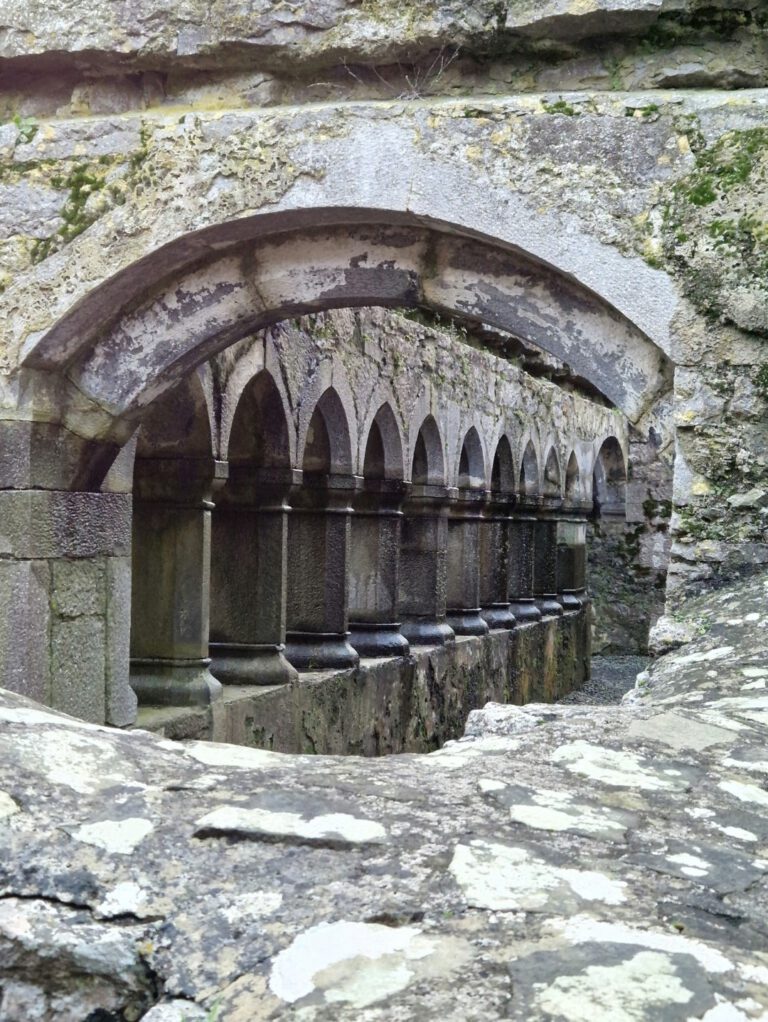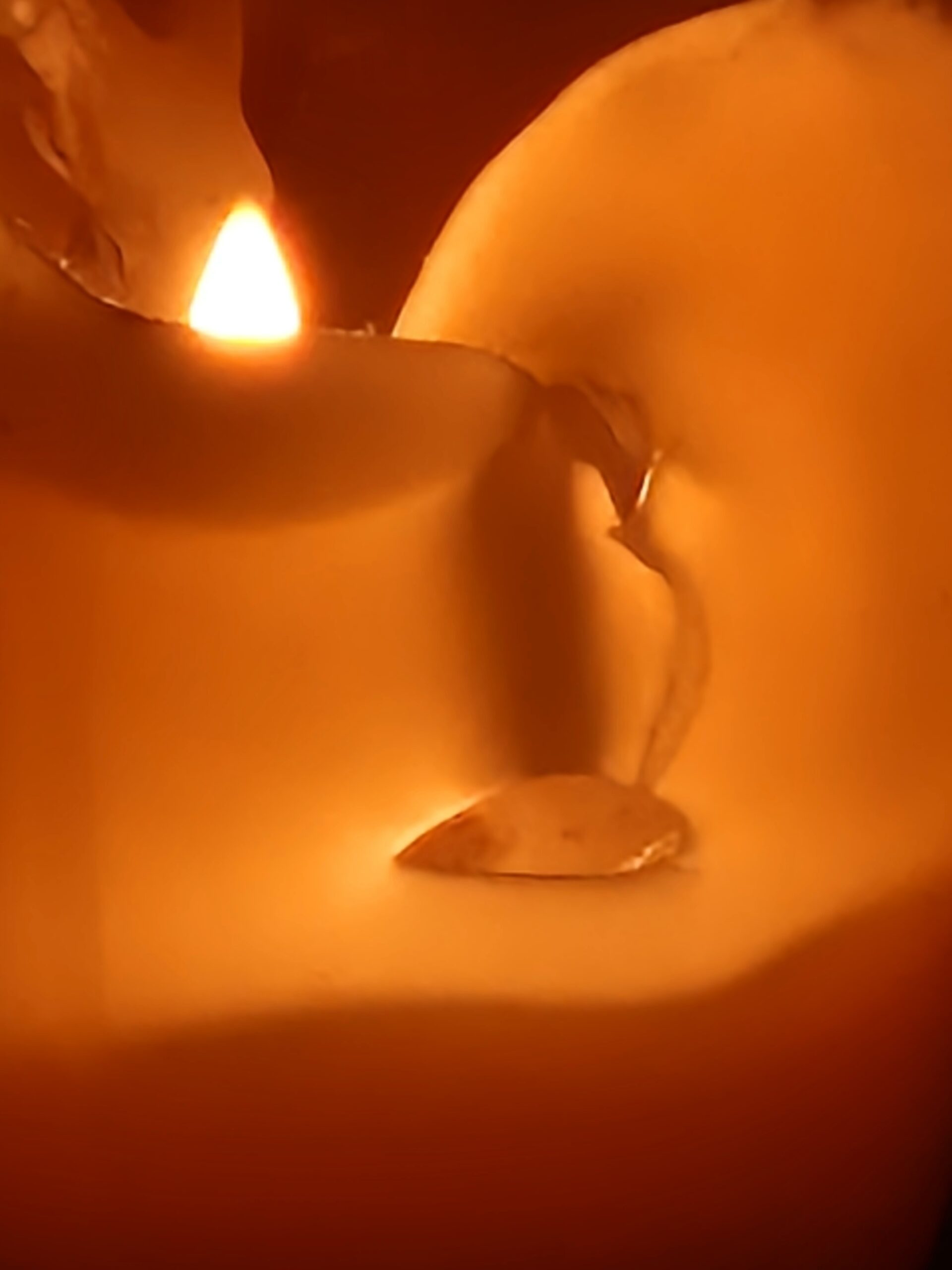Remember that when you leave this earth, you can take with you nothing that you have received – only what you have given: a full heart enriched by honest service, love, sacrifice, and courage.
St. Francis of Assisi (1181 – 1226)
We are not human beings having a spiritual experience; we are spiritual beings having a human experience.
Pierre Teilhard de Chardin.
I honour the place within you where the entire Universe resides; I honour the place within you of love, of light, of truth, of peace; I honour the place within you, where, when you are in that place in you, and I am in that place in me, there is only one of us.
Meaning of `Namasté´
I recently had the unexpected opportunity to travel to Ireland to be of service to someone very dear to me. During my stay, we visited the ruins of a nearby medieval Franciscan priory, long abandoned and forgotten, deep in the deserted Irish countryside. Founded in 1351, Ross Errilly Friary became home to a thriving community of the Order of St. Francis for over four centuries, until it was finally abandoned in 1753.
Standing on a slight rise overlooking the Black River, the church and bell tower are located to the south of a small, well-preserved central cloister with domestic buildings to the north. Amongst these are a kitchen (equipped with an oven and a water tank for live fish), a bake house, and a refectory. The dormitories are on the upper levels. One unusual feature is a second cloister, built to accommodate the friary’s growing population.
The quality of the stonework matches anything I have ever seen. Countless arches are supported by beautifully worked pillars, all laid out in finely balanced geometrical harmony. The dimensions are pleasing to body, mind, and spirit, and the fact that most of the stone structure remains intact after three quarters of a millennium of the wind and rain of the North Atlantic is a testament to the excellent quality of the workmanship.
The idyll of community life at Ross Errilly was often disrupted throughout the four centuries of its existence, particularly in the context of the tyranny of English rule. Life there was marked by repeated evictions and other forms of persecution. For example, in 1531, the Franciscans had loudly opposed the break with Rome instigated by Henry VIII, a stance which would prove costly after the schism. In 1538, English authorities imprisoned two hundred of the monks, banishing or killing an indeterminate number of their brethren.
Like many other abandoned historical Christian sites in Ireland, Ross Errilly has continued to be used as a burial ground by residents from the surrounding locality. In addition to numerous tombs that date from the friary’s active period, many graves dating from the 18th through 21st centuries can be found inside the church walls.
The picturesque location, the architecture, and the beautiful stonework commanded my initial attention. Then, as I gradually began to take note of the venerable graves, the fireplaces, nooks and crannies of the living quarters, and the beautiful arches and window structures, the ruins slowly came to life.
I began to tune into the energy field of the community which had lived here for so long, up until ten generations ago, and imagined the activities which would have been common throughout those centuries of habitation.
As I wandered from one enclosed area to the next, the lives of those who had once lived, and are now buried, within those walls formed a collage in my mind’s eye. How simple, yet arduous, life would have been for them, focussed not only on the essentials of daily spiritual practice but also facing and meeting the challenges of the human condition.
When the place came alive in this way, the energy shifted from that of tomb to womb. The silence, punctuated only by the occasional shrieks from the murder of crows which had sequestered the bell tower as their look out, became pregnant with promise.
I began to relate, on a primeval level, to the vision, goals, and purpose of the one-time residents of this hallowed place. Theirs would have been a deep spiritual experience, I mused.
What we today call `unity consciousness´ is the experience of being subsumed, – being one with all of Creation. We shift from the duality of subject and object, observer and observed, to being both and neither, – to simply being. I recalled having several encounters along these lines, all of which occurred during periods of intimate cosmic communion.
Climbing a stairwell and looking around from my elevated vantage point, I took in the adjacent river, flowing slowly westwards, and the broad lush plain that unfurled in all directions under the endless, majestic, low-lying sky. It was easy to imagine the intimate connection between the erstwhile residents and the elements of air, fire, water, and earth, – their lives orchestrated by and lived in harmonious synchronicity with the ever-changing seasons.
In that moment, the energies of promise and belonging prevailed. It was, indeed, a special experience, an unexpected boon, a moment of grace.
On awaking the next morning, the echo of a mantra, – `tomb and womb´, – rose up from the depths of my slumber. I instantly recalled the visit to the priory the previous day and could feel how deep an impression it had left upon me. There followed some contemplation on a few formative episodes in my own life.
Every threshold, with its apparent slowing down of time, innate uncertainty, and promise of the exotic, has ultimately proven to be both tomb and womb. The old perishes to make room for the emergence of the new. The avocado seed disintegrates as the tip of the sapling emerges. Adolescence is the wake of childhood, emigration contains arrival, healing presupposes the death of old ideas, and mortality encompasses eternity. The chrysalis is at one and the same time a tomb, for the caterpillar, and a womb, for the butterfly.
In the given situation this may not be apparent at first glance. Impaired by the lens of duality, our perception ensures that one aspect, – usually that which is receding, to which we are so inclined to remain doggedly attached, – tends to dominate, and we proceed to engage in a binary mental struggle between letting go of it and embracing its opposite. How often have I sensed only despair in the dread of annihilation, only to eventually rise like a phoenix from the ashes to commence the next stage of my journey?
My timely pilgrimage to Ross Errilly has reminded me of life’s invitation to slow down, to accept and hold apparent opposites, to embrace the mysterious, and to continue to trust the process of this unfolding life.







